Time: 10:30AM – 3:00PM
Location: Lower Big Horn Sheep Canyon
Arkansas River 04/23/2024 Photo Album
Because of doctor and physical therapy appointments, my opportunity to fly fish during the upcoming week was limited to Tuesday, April 23, 2024. I studied the weather and fly shop reports, and largely due to favorable temperatures I settled on the Arkansas River in lower Big Horn Sheep Canyon. Royal Gorge Anglers and ArkAnglers both reported caddis sightings, with the brachycentrus hatch advancing as far as Texas Creek. This information along with overcast skies in the afternoon providing ideal conditions for blue wing olives convinced me to make the drive to the Arkansas River.
For this report I will cut to the conclusion quickly. Two factors impacted my day, that I failed to bake into my planning. The water clarity was somewhat colored, although visibility was adequate for trout to see food; however, the turbidity probably indicated low level snow melt, and this circumstance in turn probably caused lower than normal water temperatures. Caddis like warmer temperatures for their emergence. The second factor was the fly fisherman’s four letter word; wind. It was strong and constant.
I fished from 10:30AM until 3:00PM, and I landed four trout. One was a small brown, and the others were rainbow trout including two quite nice fish in the thirteen to fourteen inch size range. All my success occurred between 10:30AM and 1:30PM, as I deployed an indicator nymphing rig with a strike indicator, split shot, emerald body caddis larva and bright green go2 caddis pupa. All but one of the landed trout grabbed the caddis larva. In addition to the landed fish, I connected with five additional fish that stayed on my line only briefly before shaking free. This issue, losing fish, is becoming an ongoing concern this spring, but I am not sure how to remedy it.
During this nymphing exercise, I spotted only two rises. I fished from the midpoint of the north braid, until the point where it split off from the main stem, as another angler positioned himself in the nice pool just above the downstream confluence with the larger south branch. Not being able to cover the entire north branch was a disappointment, as the entire section was vacant, when I drove by and gazed up the river.
Once I arrived at the main river, I waded downstream to the point where the middle stem branched off, and then I worked my way westward along the right bank. I registered one of my temporary hook ups during this period. Once I reached the fast water, I reversed direction and moved to the nice slow moving pool above my crossing point. In the past I observed rising fish in this area. The sky clouded up nicely, so I patiently waited for a baetis hatch and rising fish. Alas, it never happened, but I decided to experiment with a double dry, and converted to a peacock hippie stomper trailing a size 16 olive-brown deer hair caddis. Both flies were summarily ignored, even though I cast to very attractive water with a bubble line and moderate depth.
By 2:30PM I surrendered to the moody trout in the Arkansas River, and I crossed at the tail of the long pool. I was reluctant to return to the indicator nymphing method (split shot removal is a major pain in the a**), so I defaulted to a dry dropper with an amber ice dub chubby Chernobyl, bright green go2 caddis pupa, and olive perdigon. On the fifth cast the flies wedged on something subsurface, and I ended up breaking off all three flies. I was not a happy camper. I sat on a rock and repeated the rigging exercise with a size 8 yellow fat Albert, bright green go2 caddis pupa and an emerald caddis pupa.
I steadily worked my way up the river along the left bank, and I managed a refusal to the fat Albert and another temporary hook up on one of the nymphs. When I reached the pocket water, my satellite phone displayed 2:50PM, and my confidence was shot, so I carefully retreated and climbed the bank and returned to the car.
Four fish in four hours was a disappointing day. Had I landed all the fish I connected with, I would have logged a nine fish day, but a 100% conversion rate is not realistic. The blue wing olive hatch was extremely brief and never prompted me to switch to dry flies. A few caddis fluttered about on the rocks, but I suspect it was a different species and not brachycentrus. The wind was very annoying, the water was tinged, there were quite a few competing anglers, and I grew bored with the fishing by 2:00PM. Tuesday represented a lot of casting and elbow stress for minimal results. I will take a break from the lower Arkansas, and I will refocus my efforts on tailwaters, unless I discover a sure thing on a freestone.
Fish Landed: 4

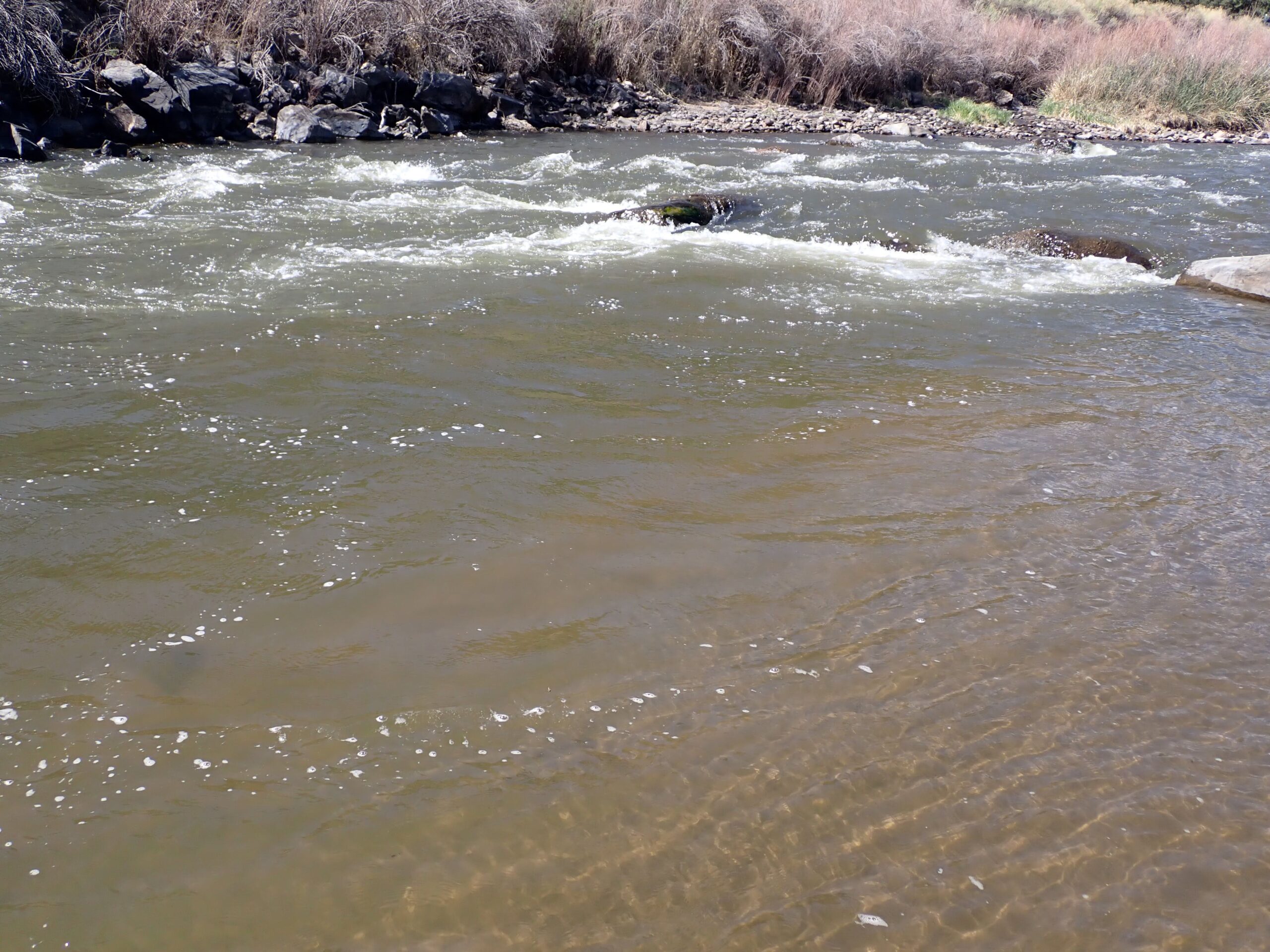
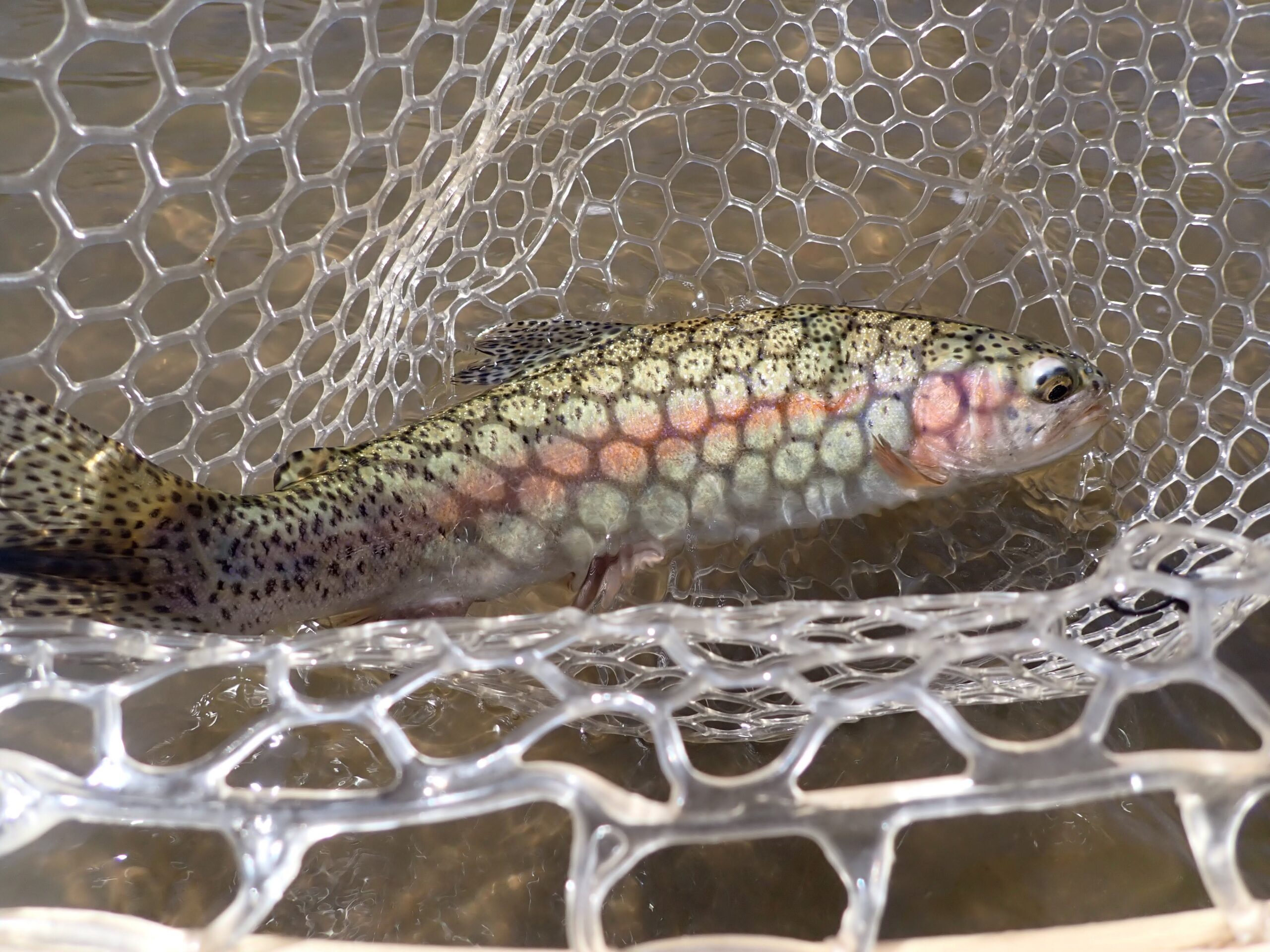
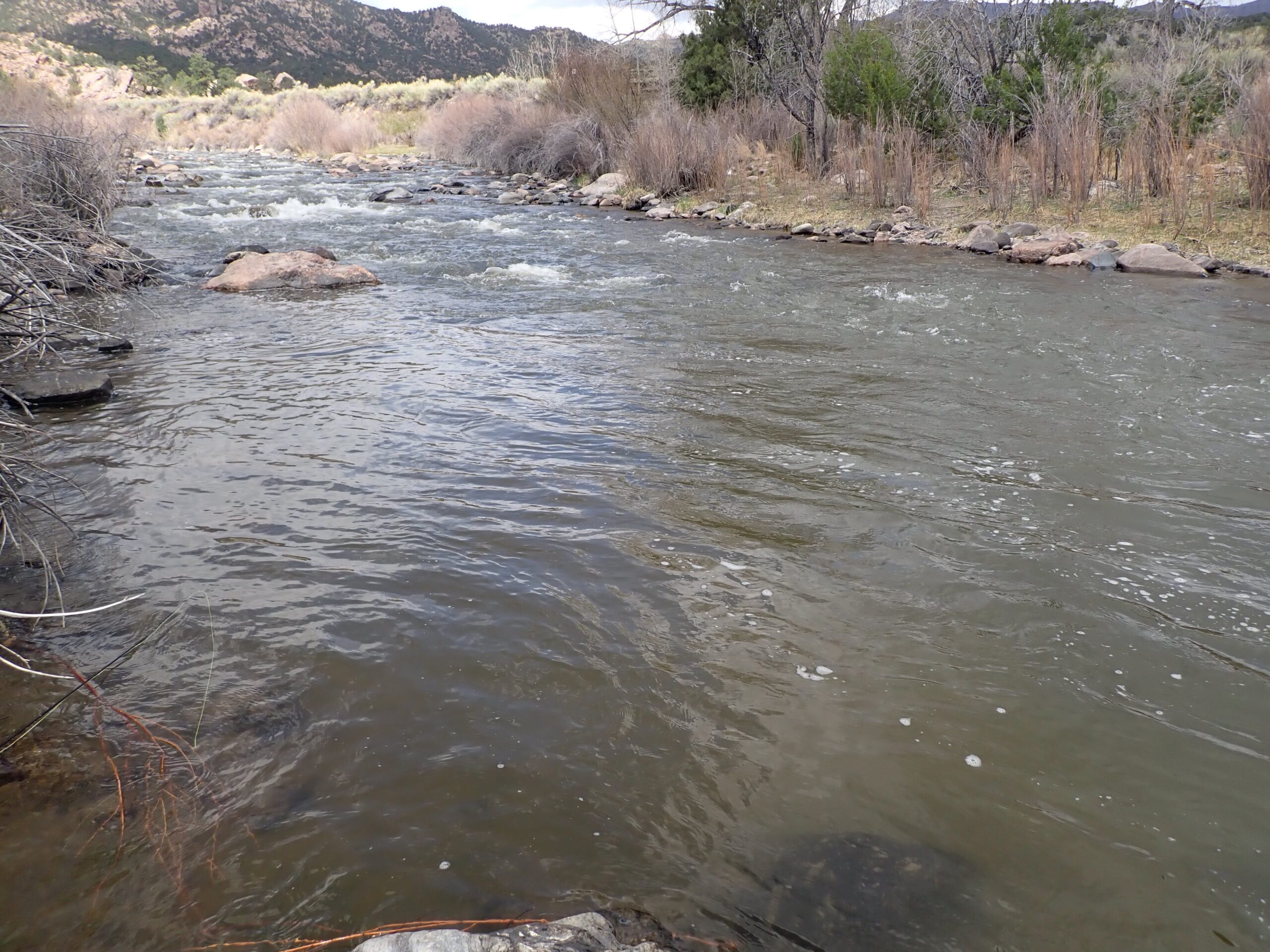
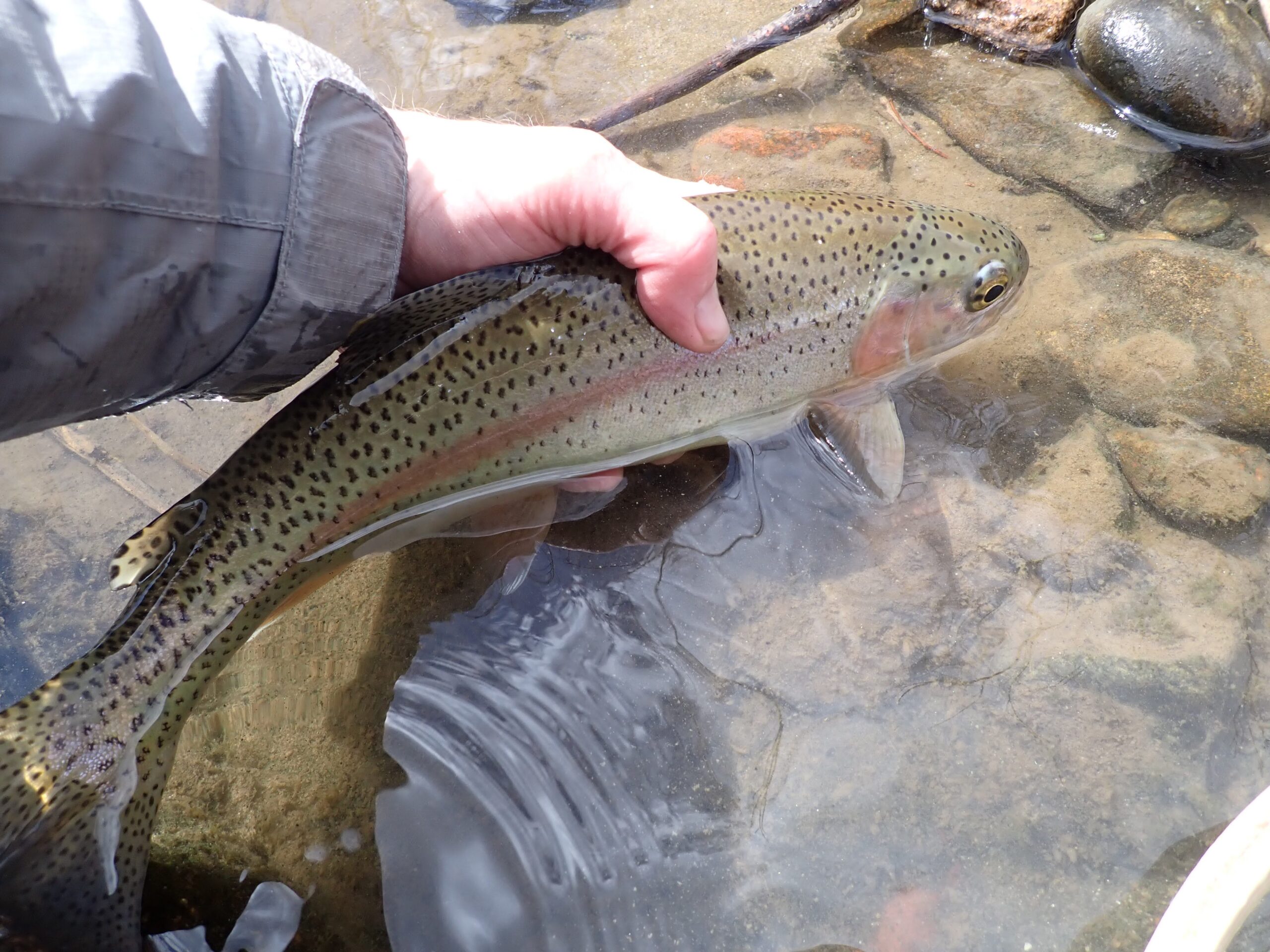
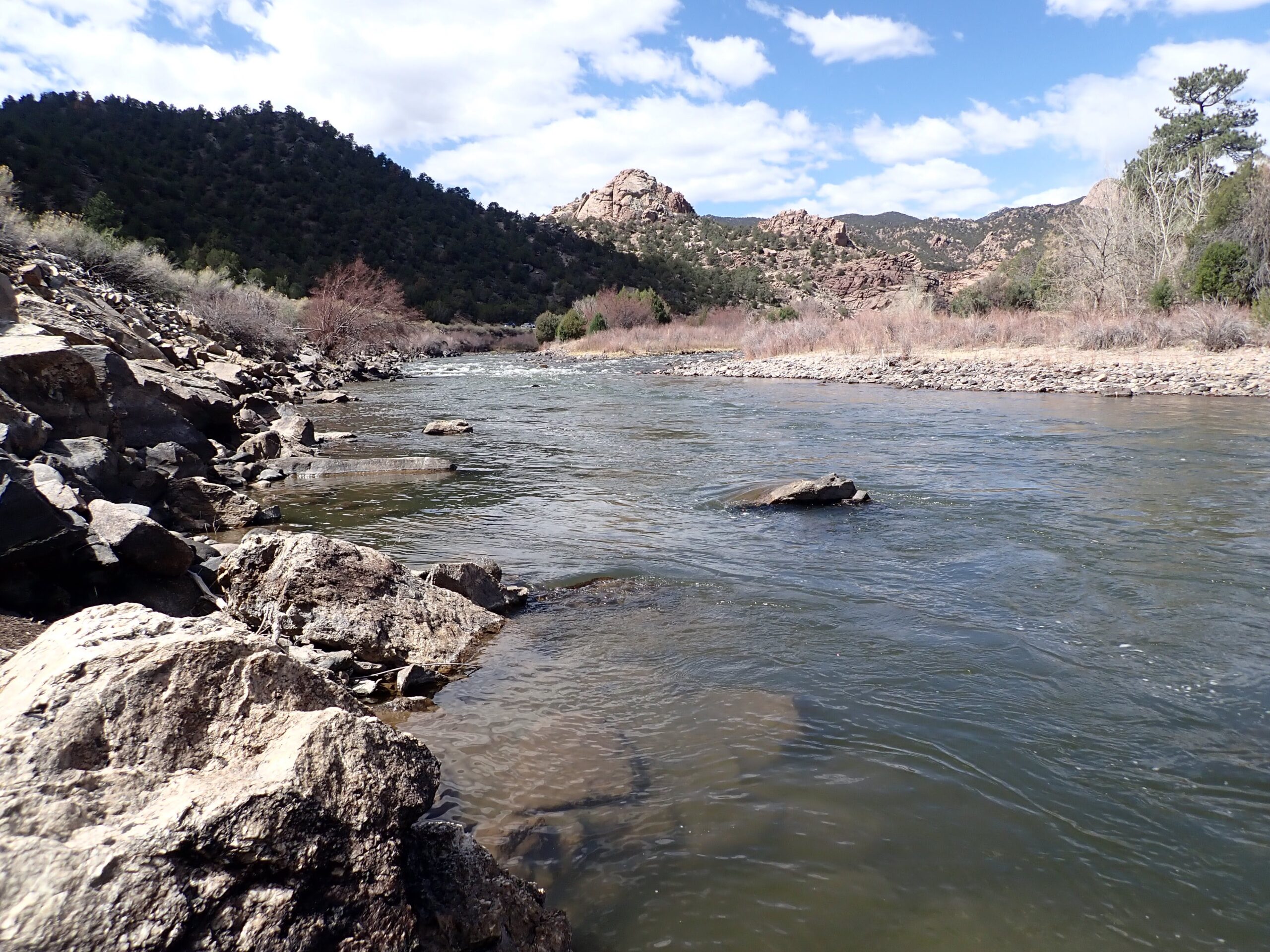
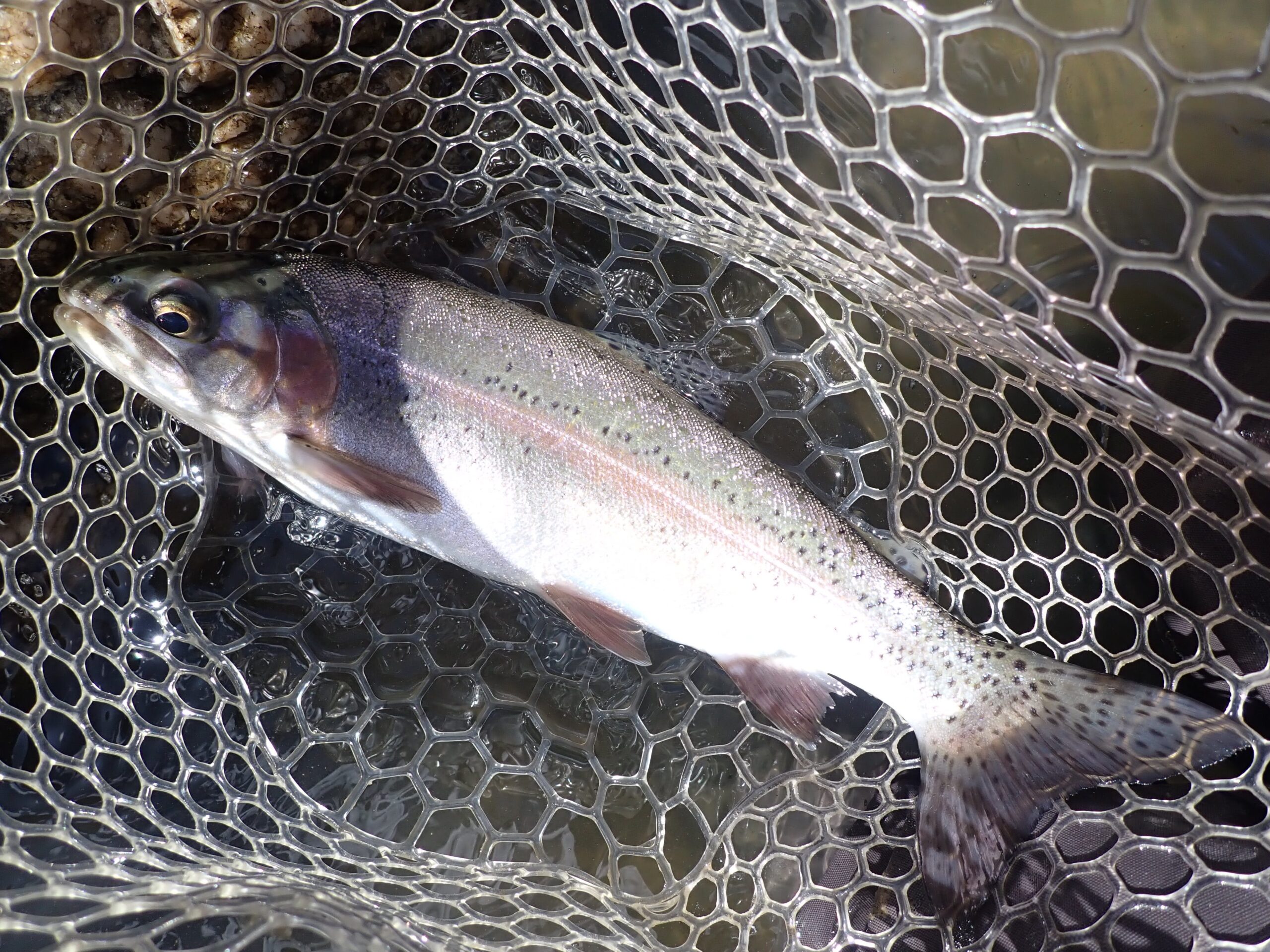
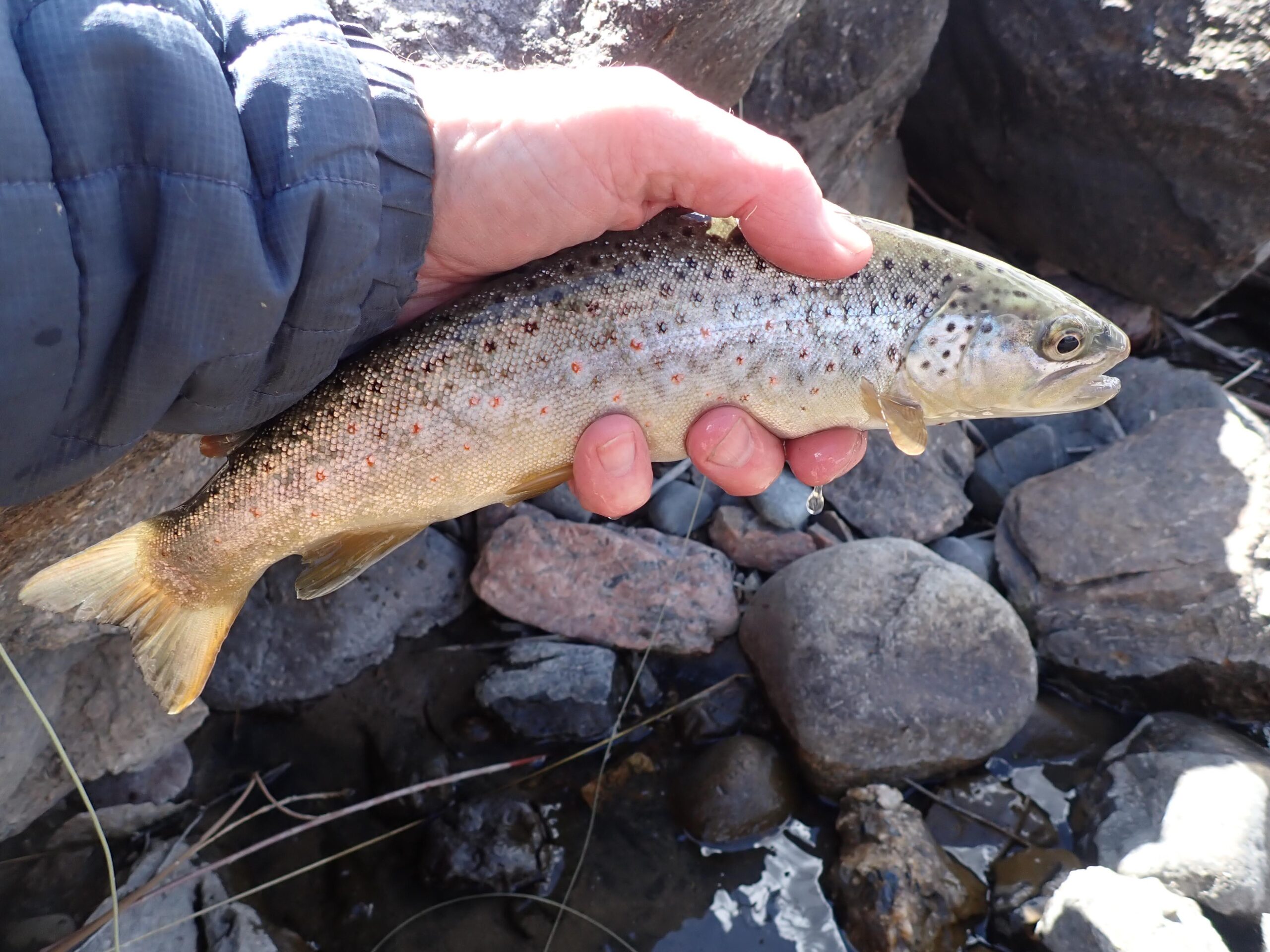
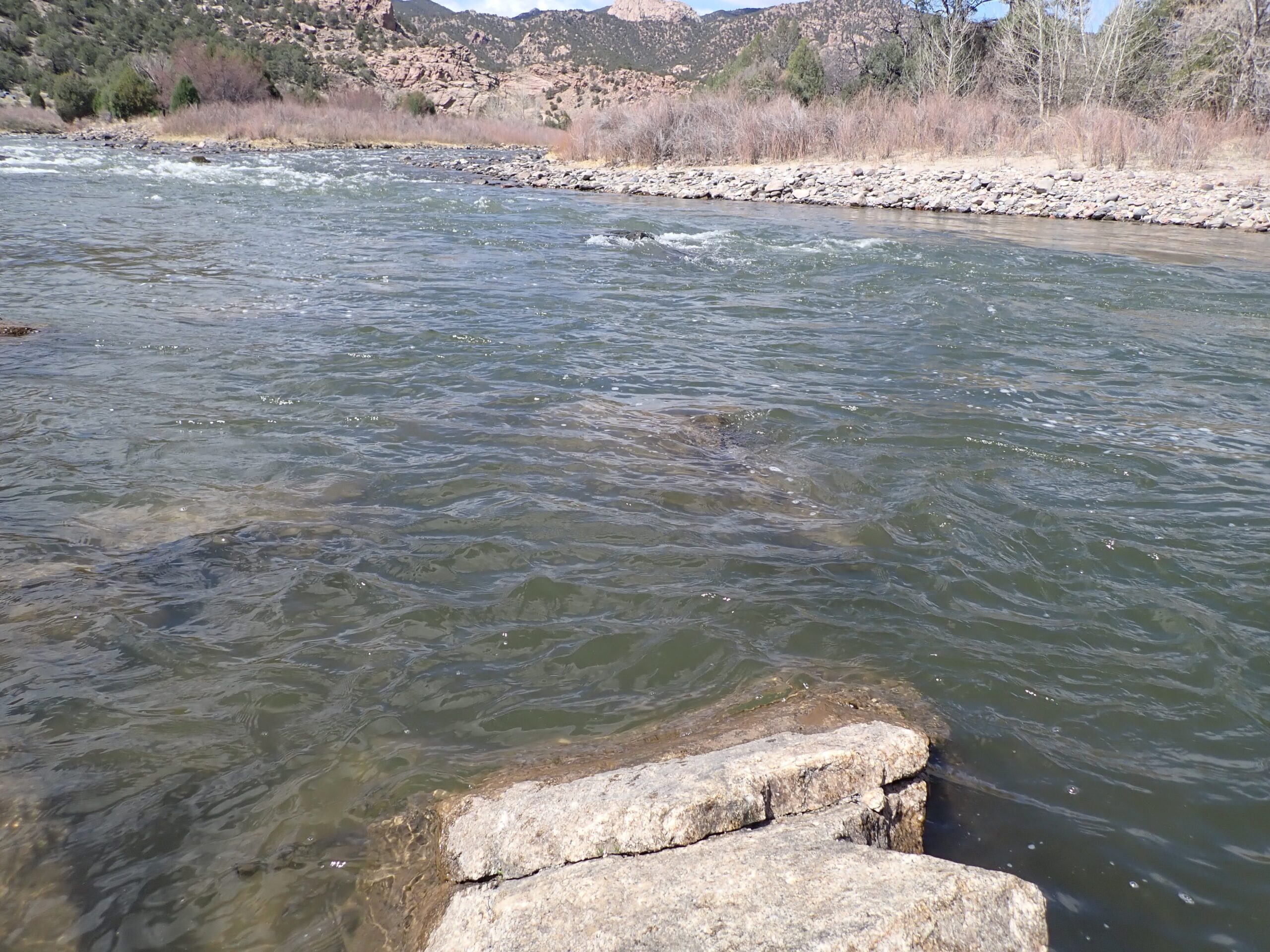
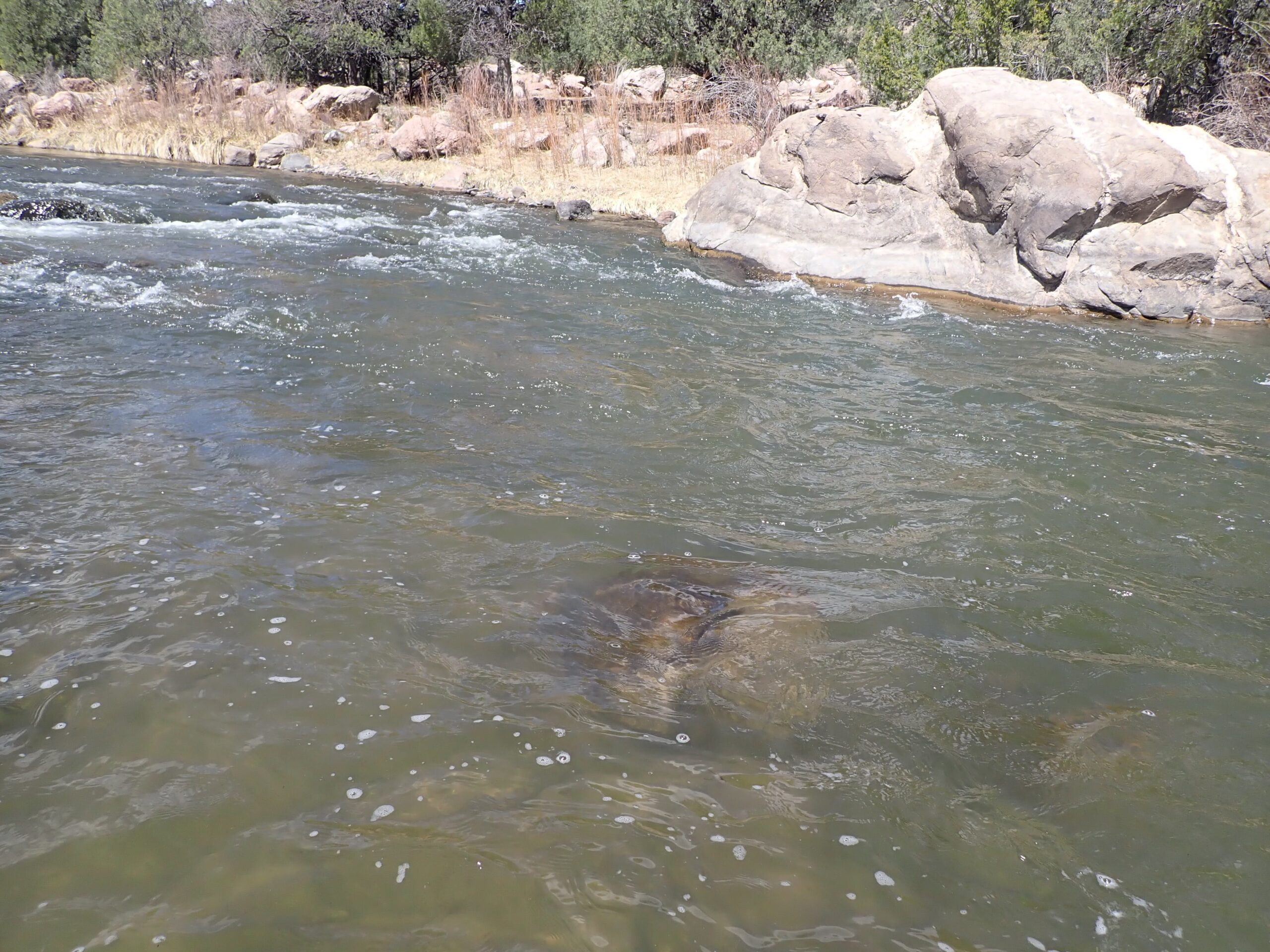
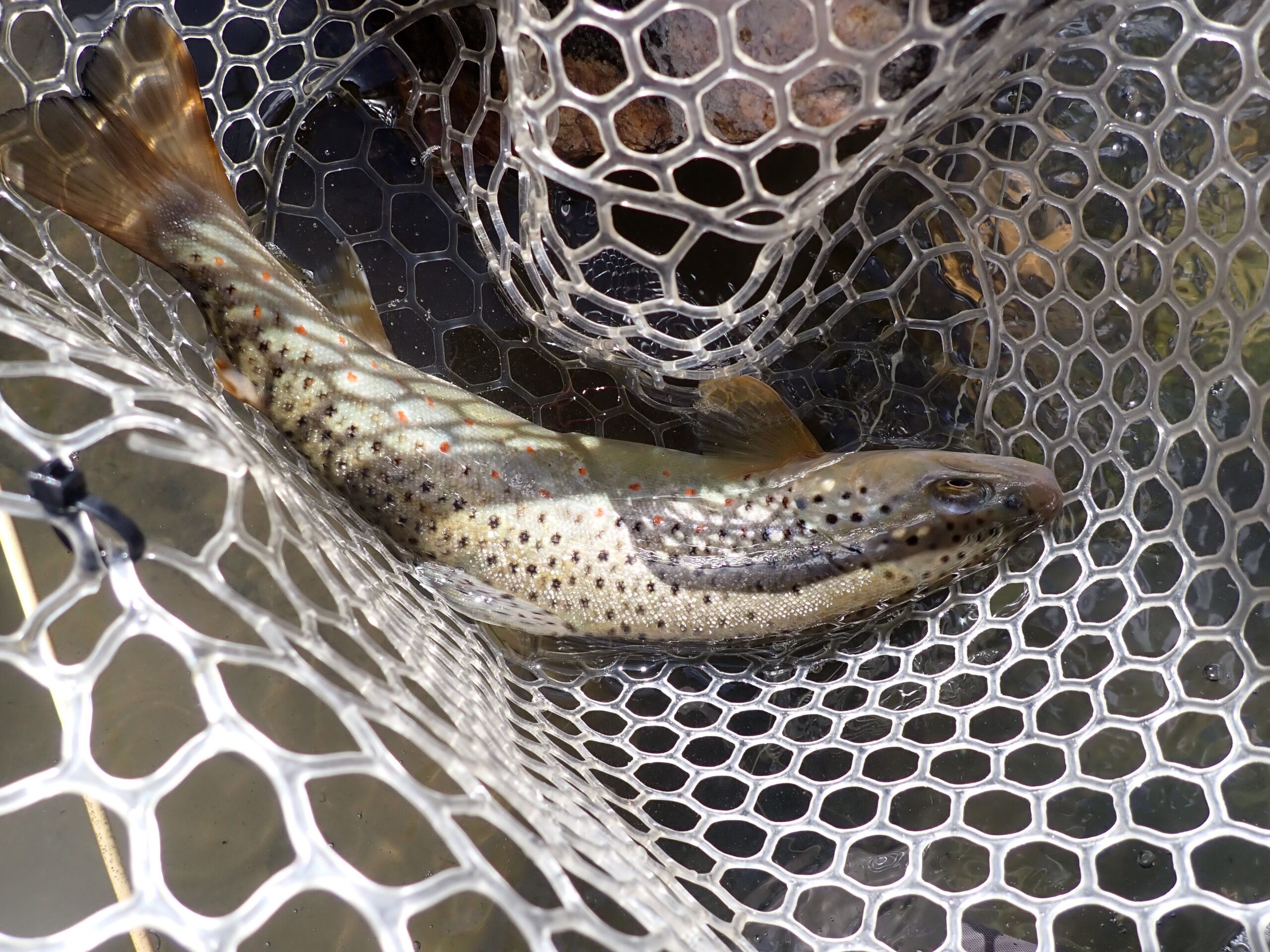
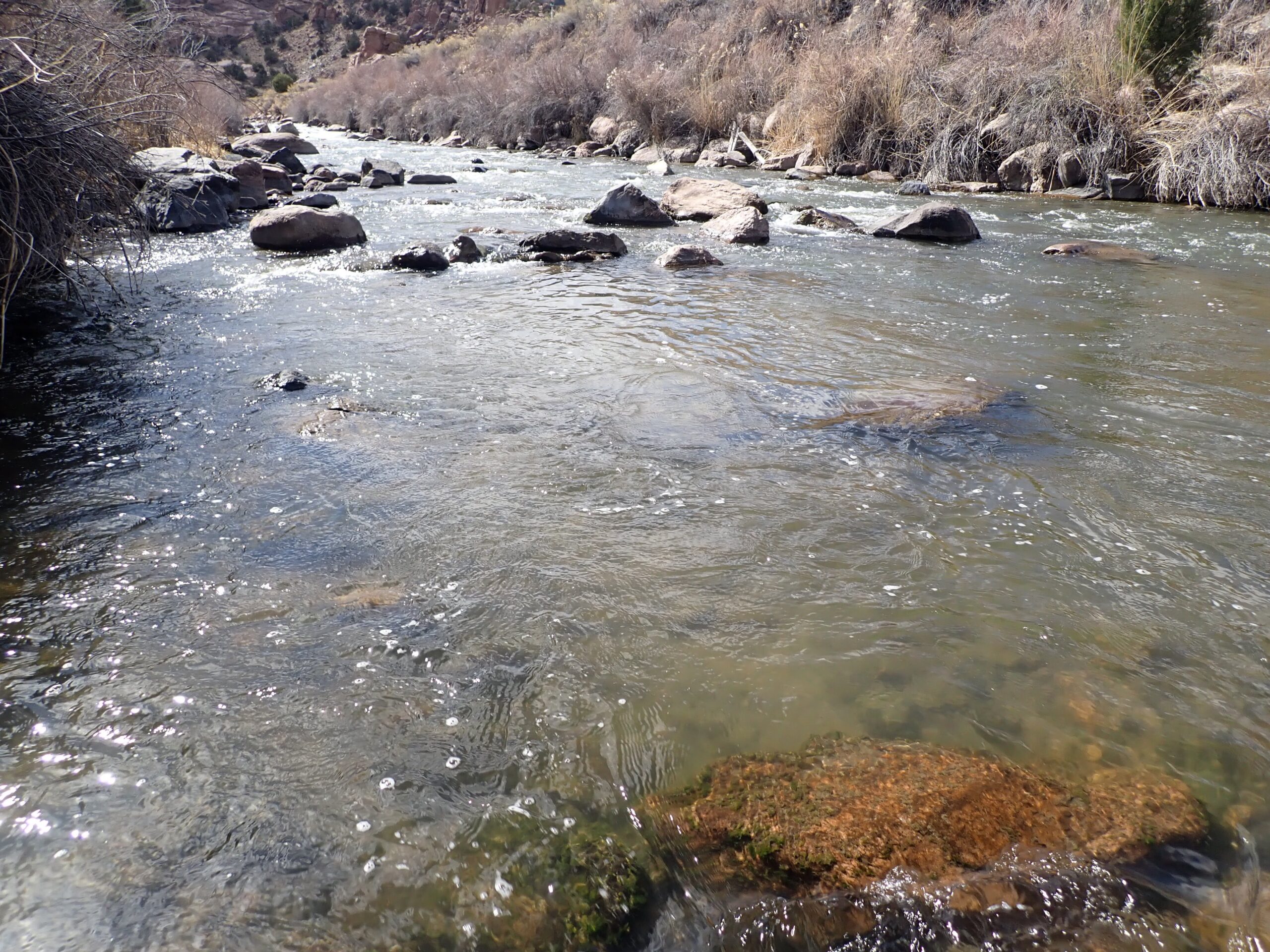
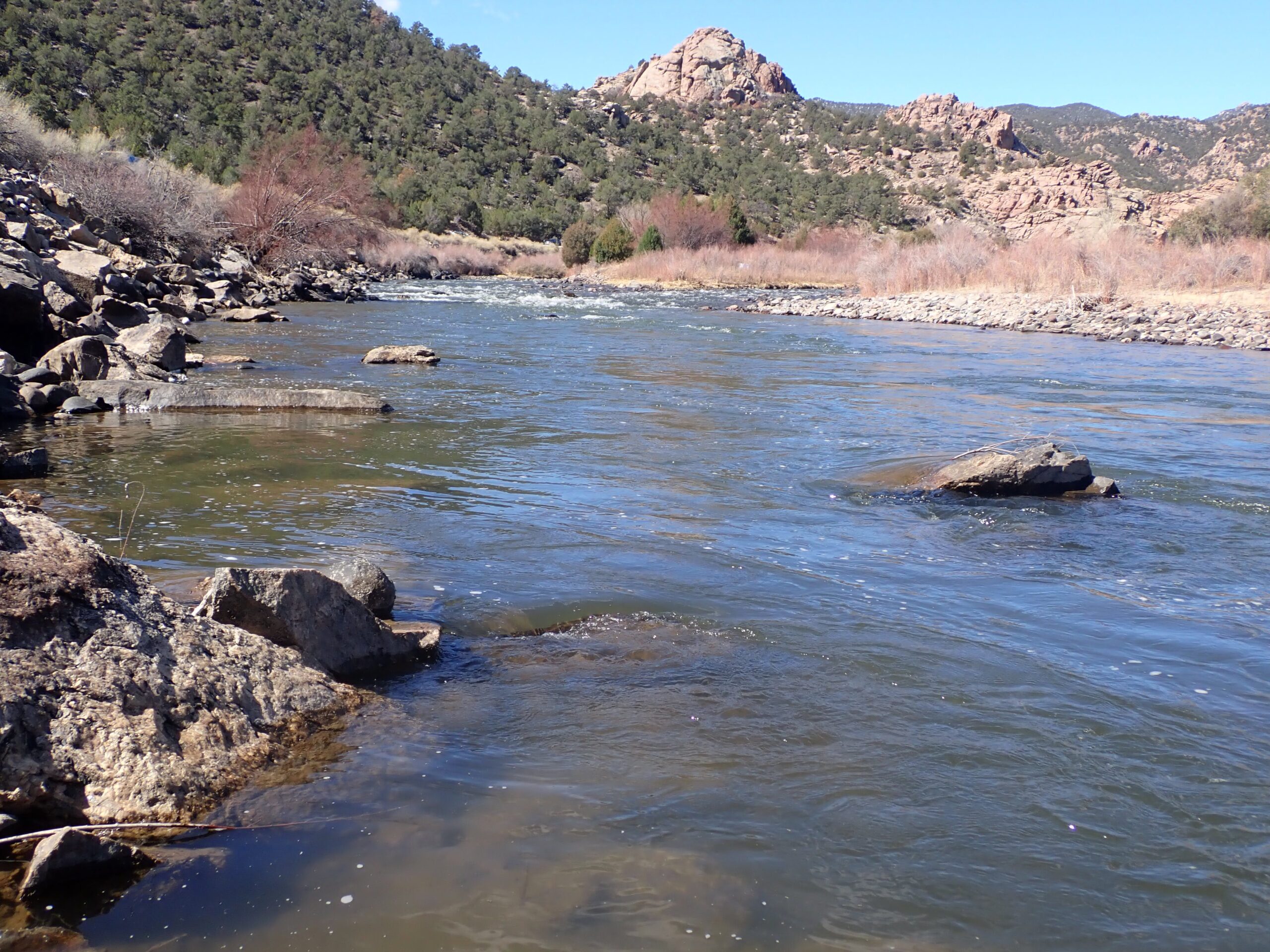
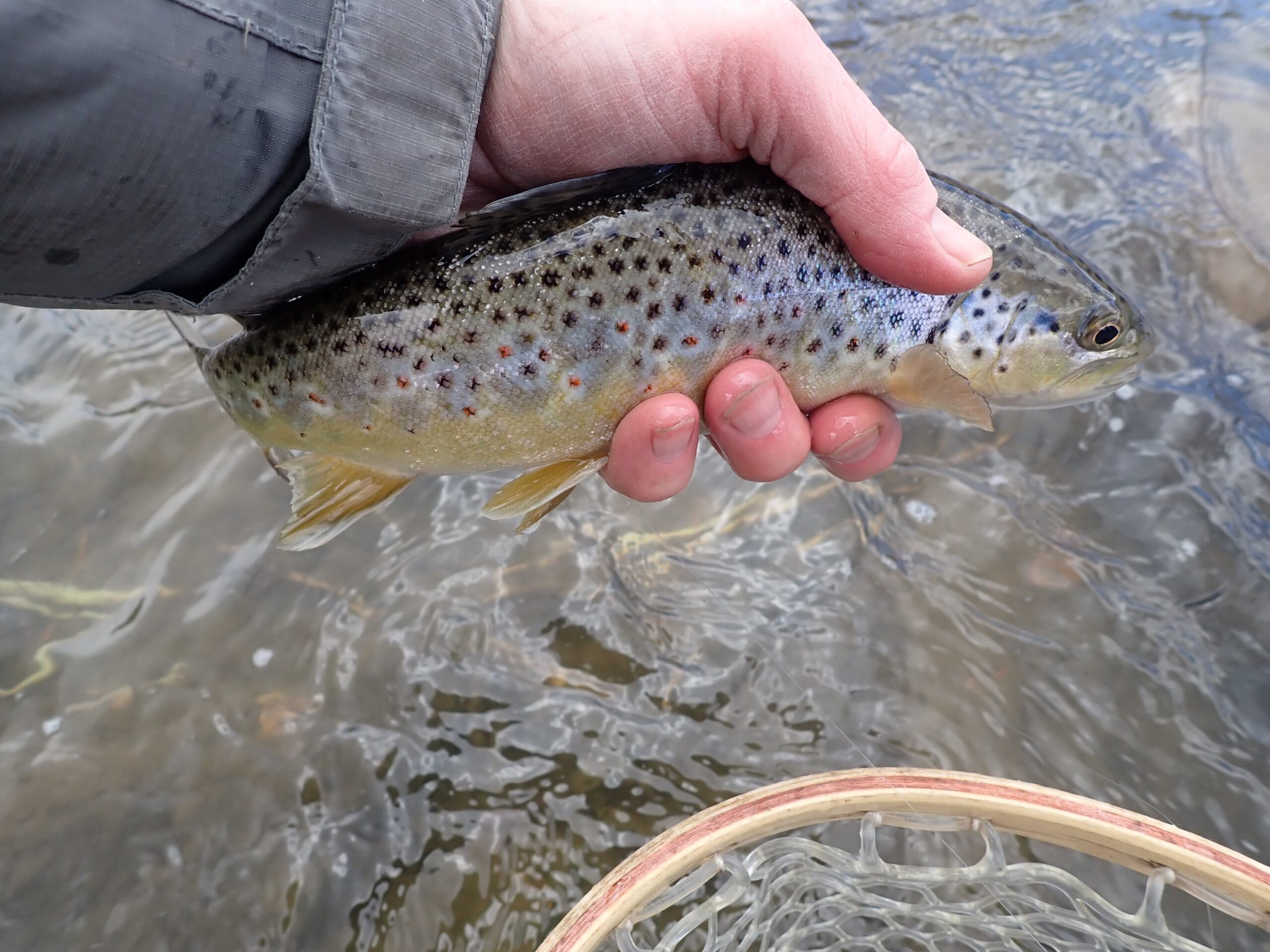
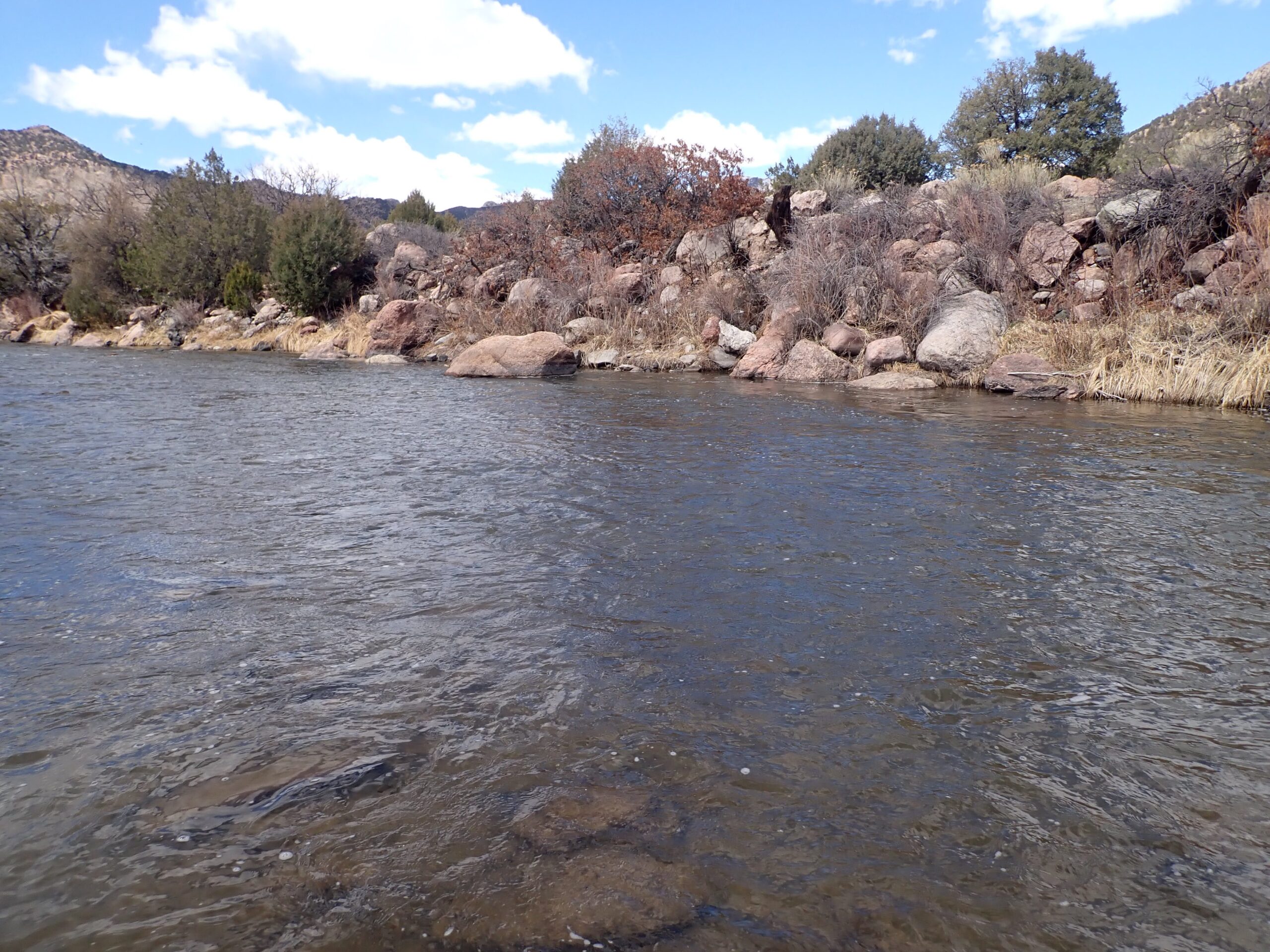
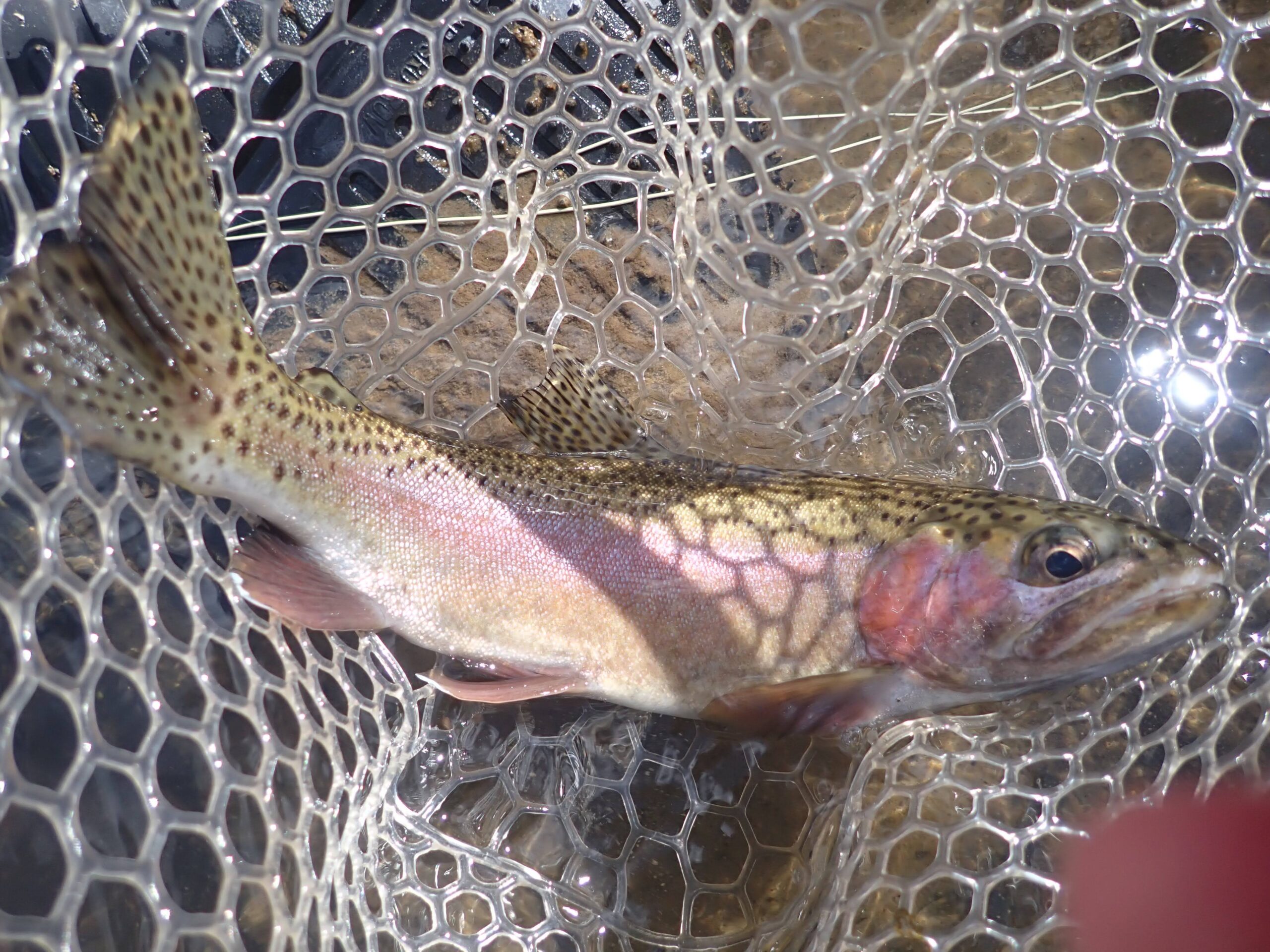
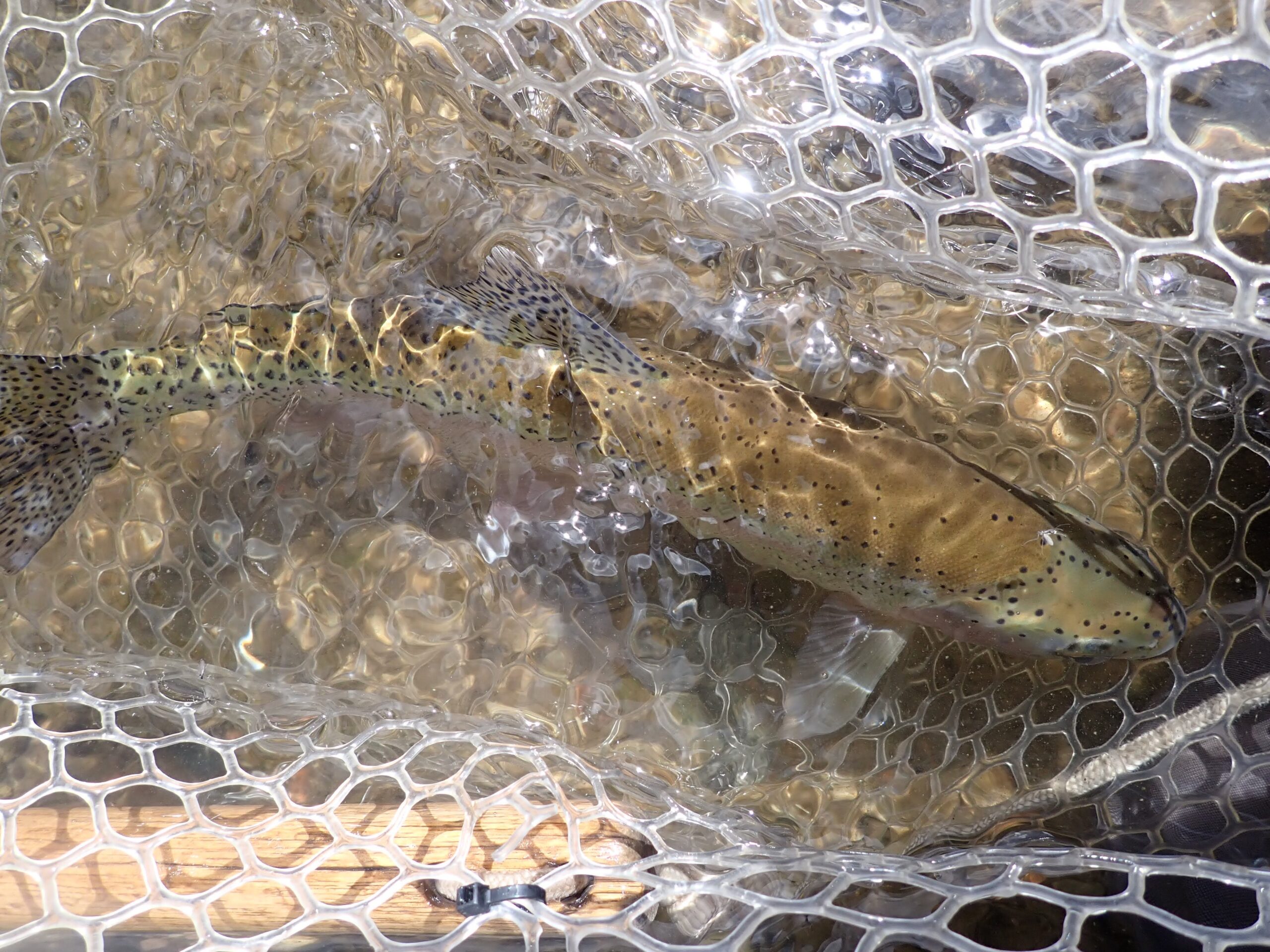
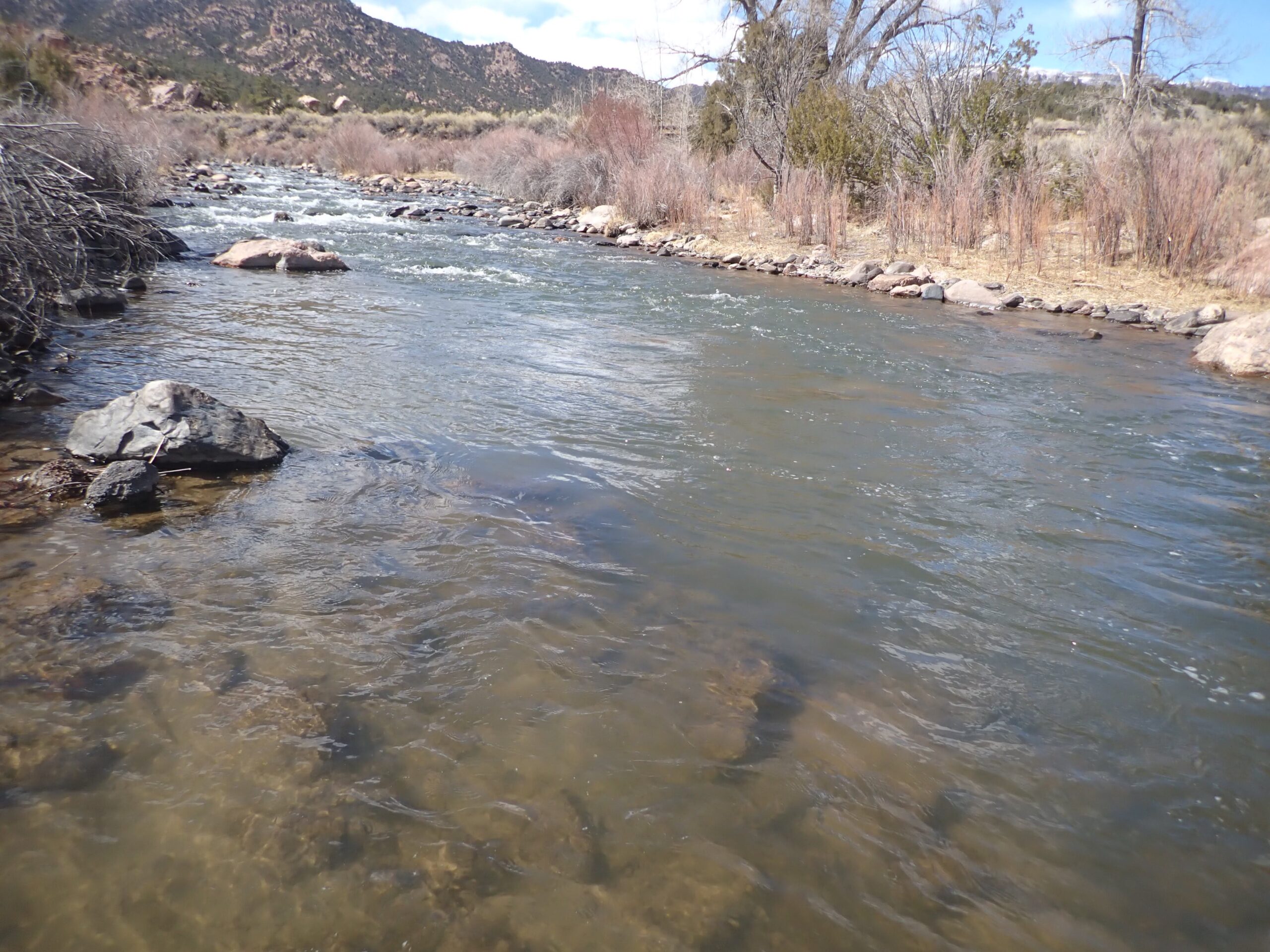
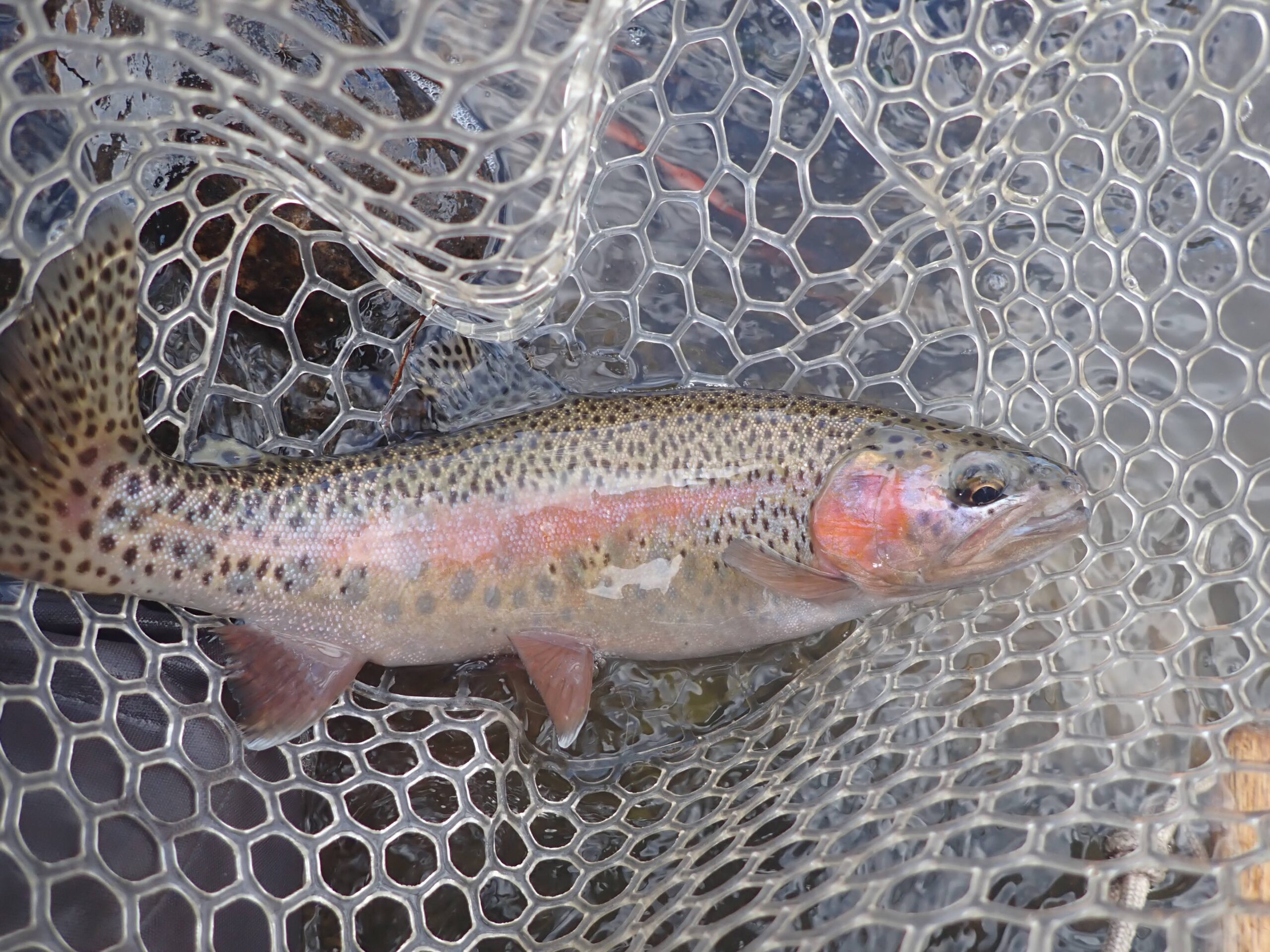
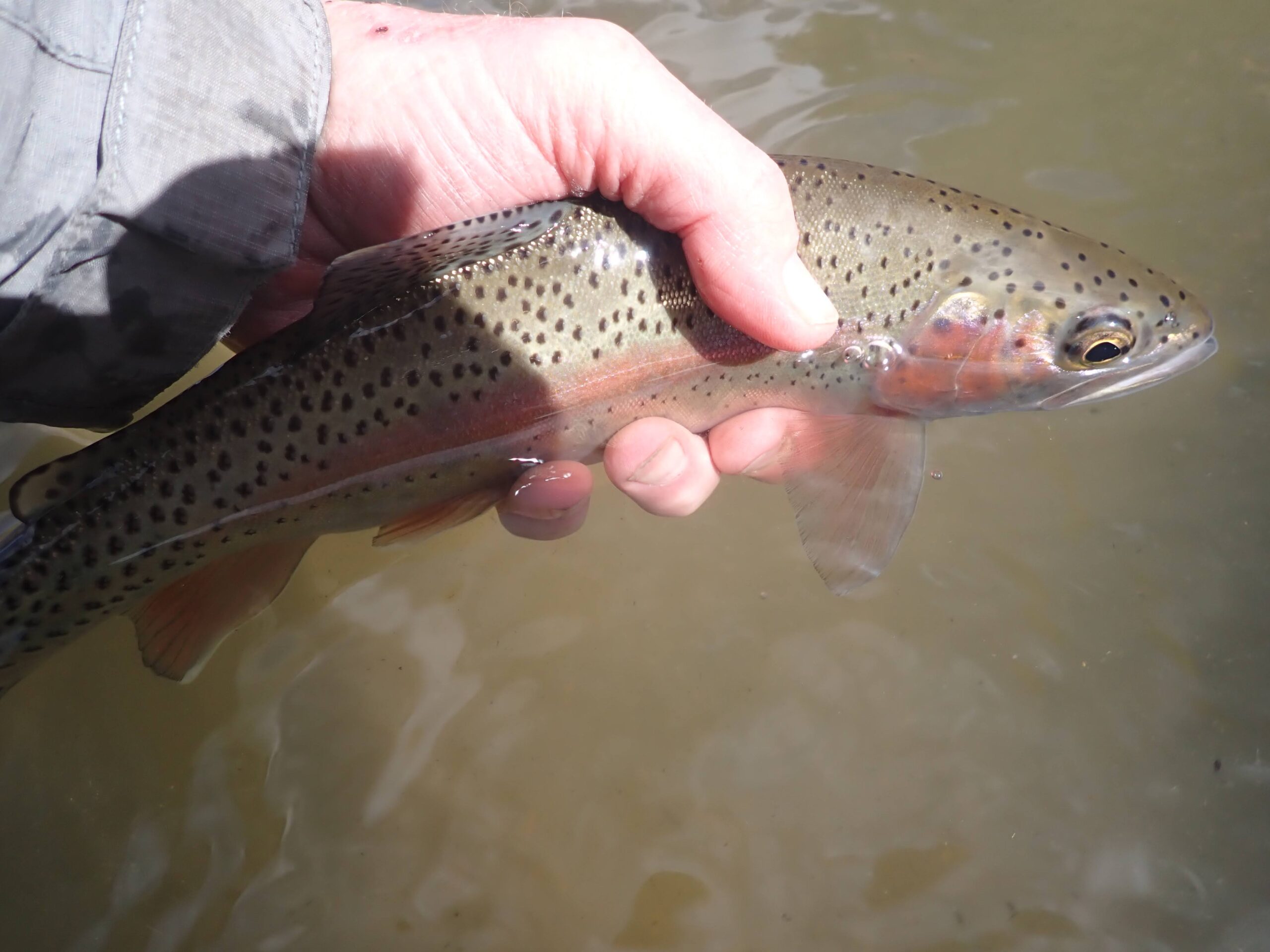
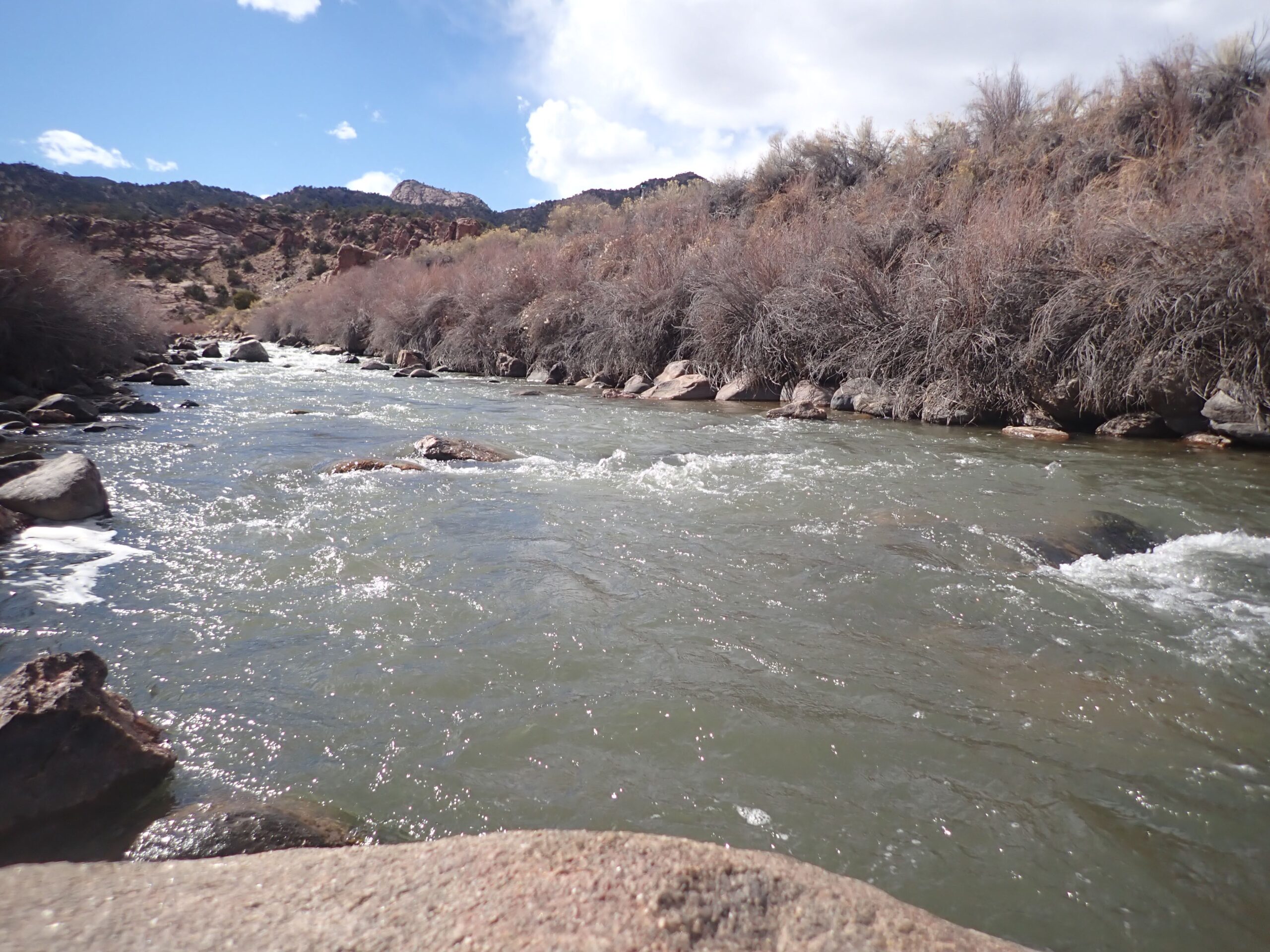
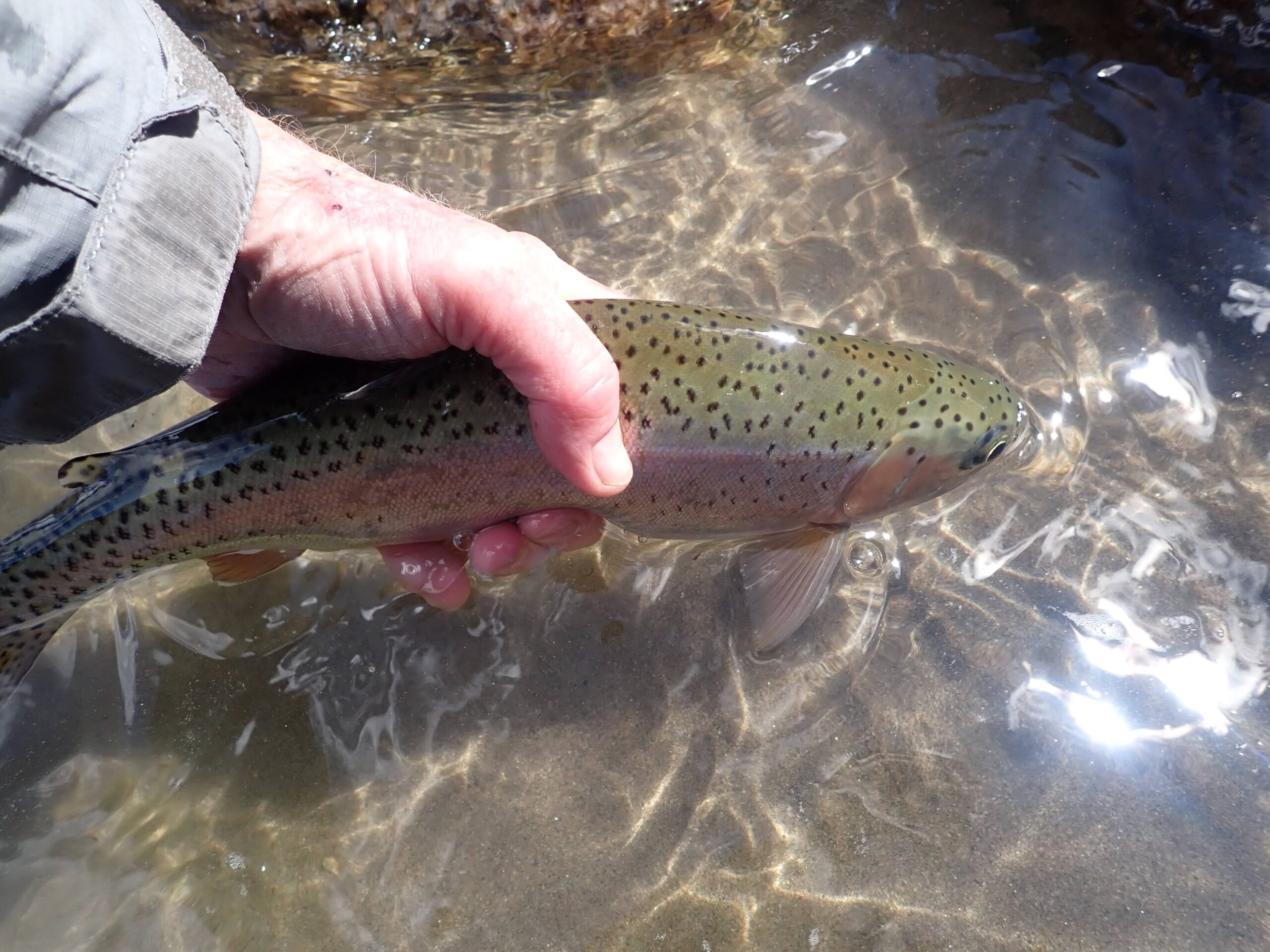
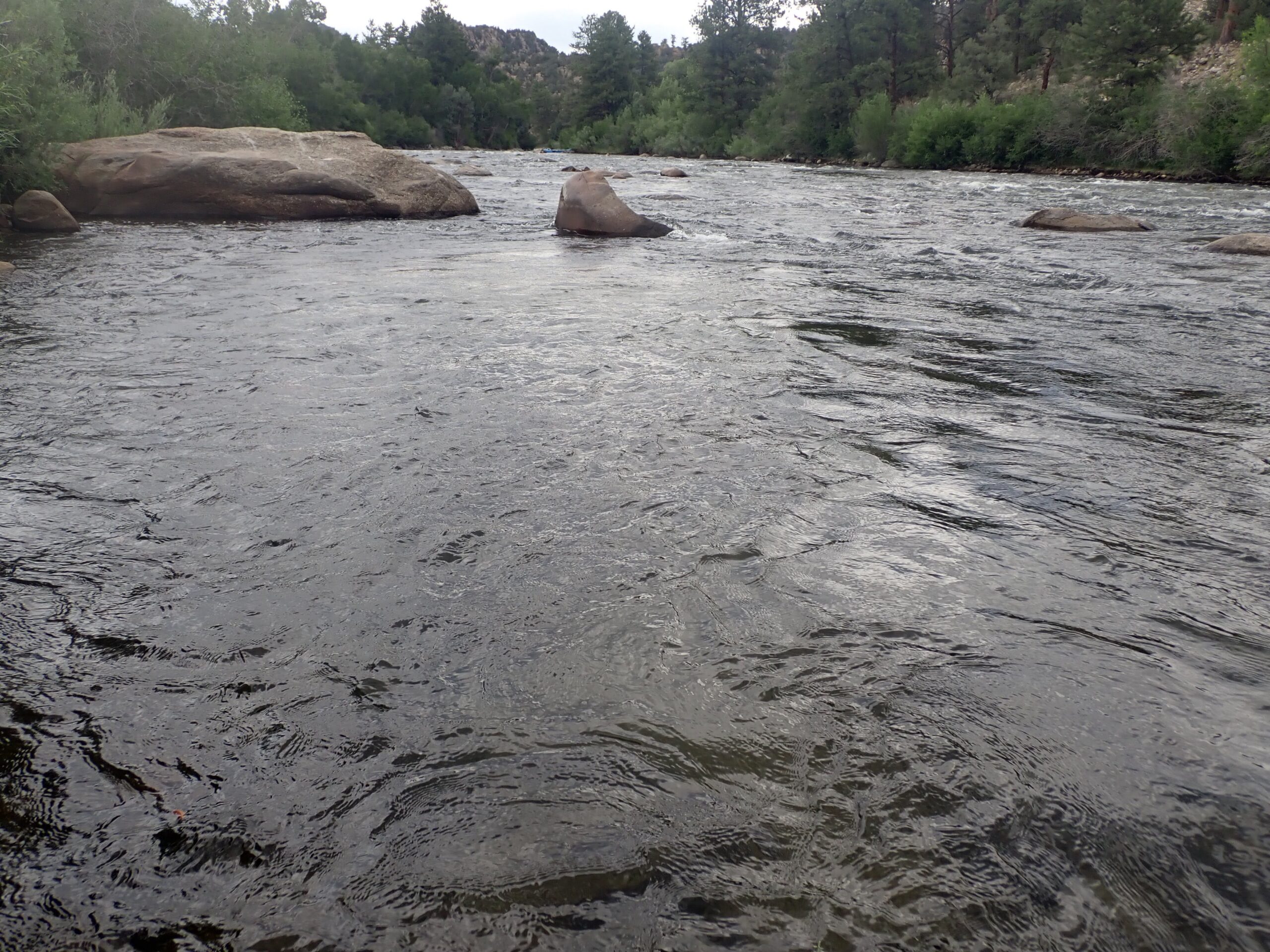 Perfect Trout Refuge During High Flows on the Arkansas River
Perfect Trout Refuge During High Flows on the Arkansas River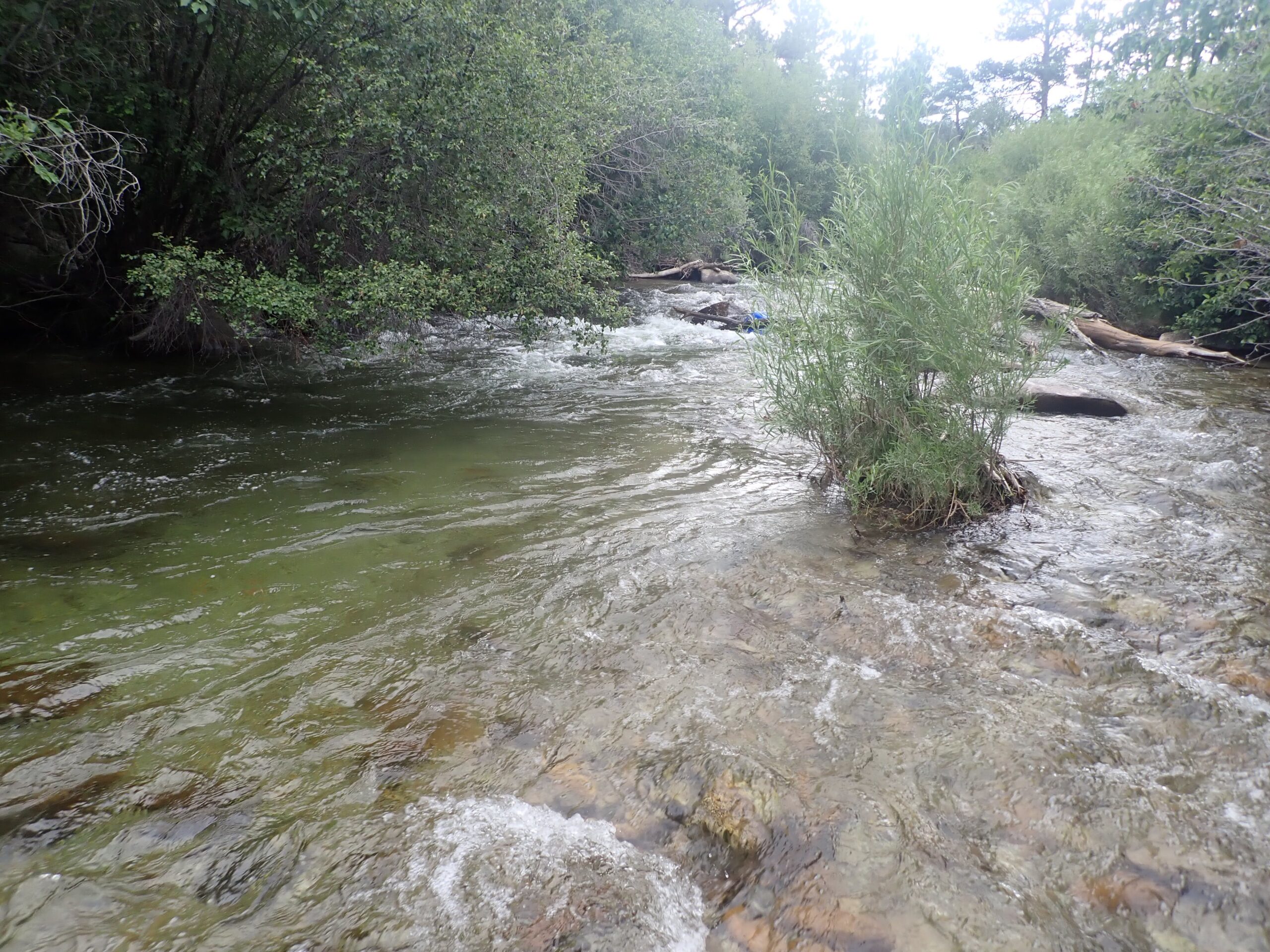 A Promising Deep Pool
A Promising Deep Pool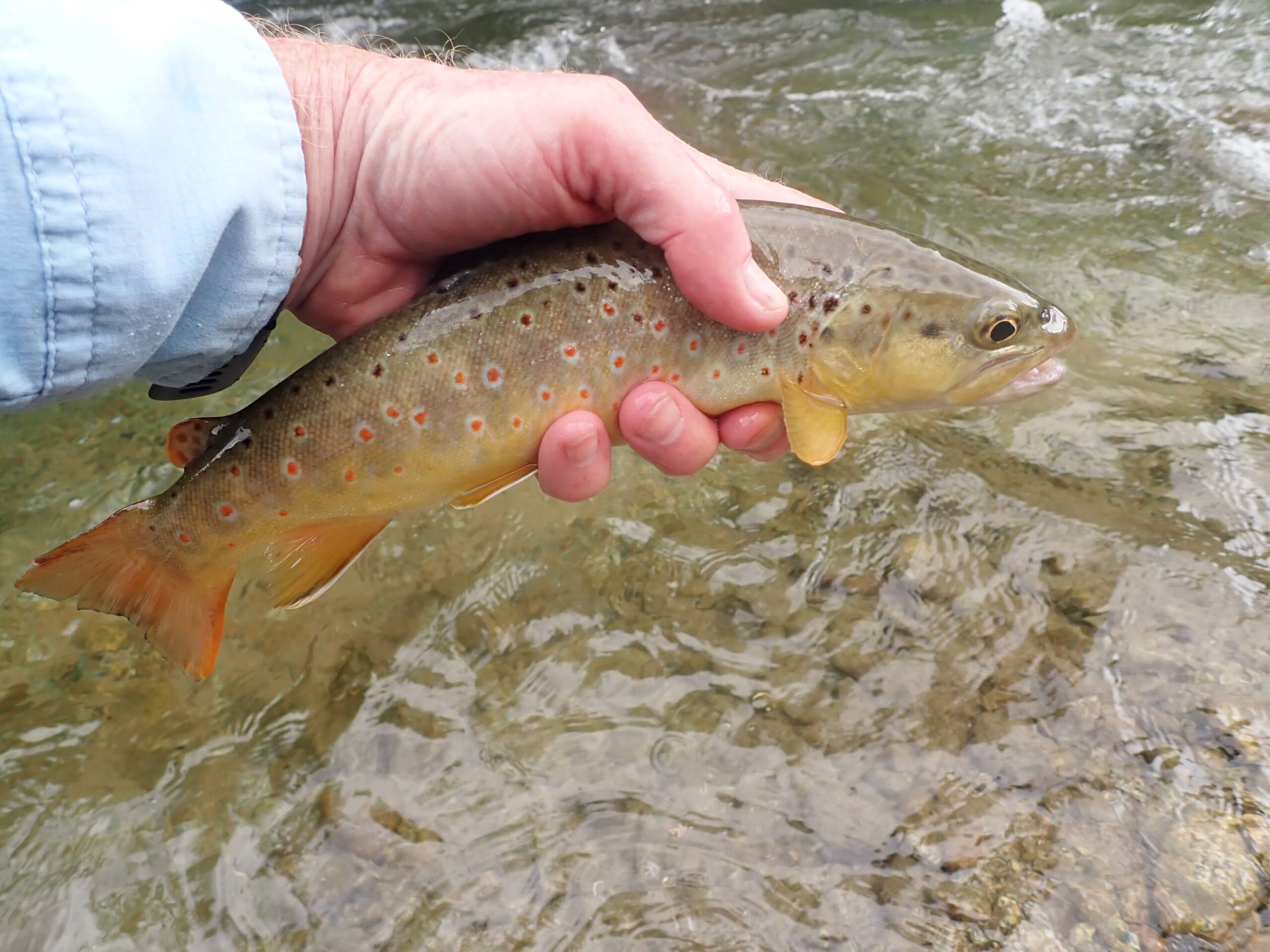 Butter Colored Brown
Butter Colored Brown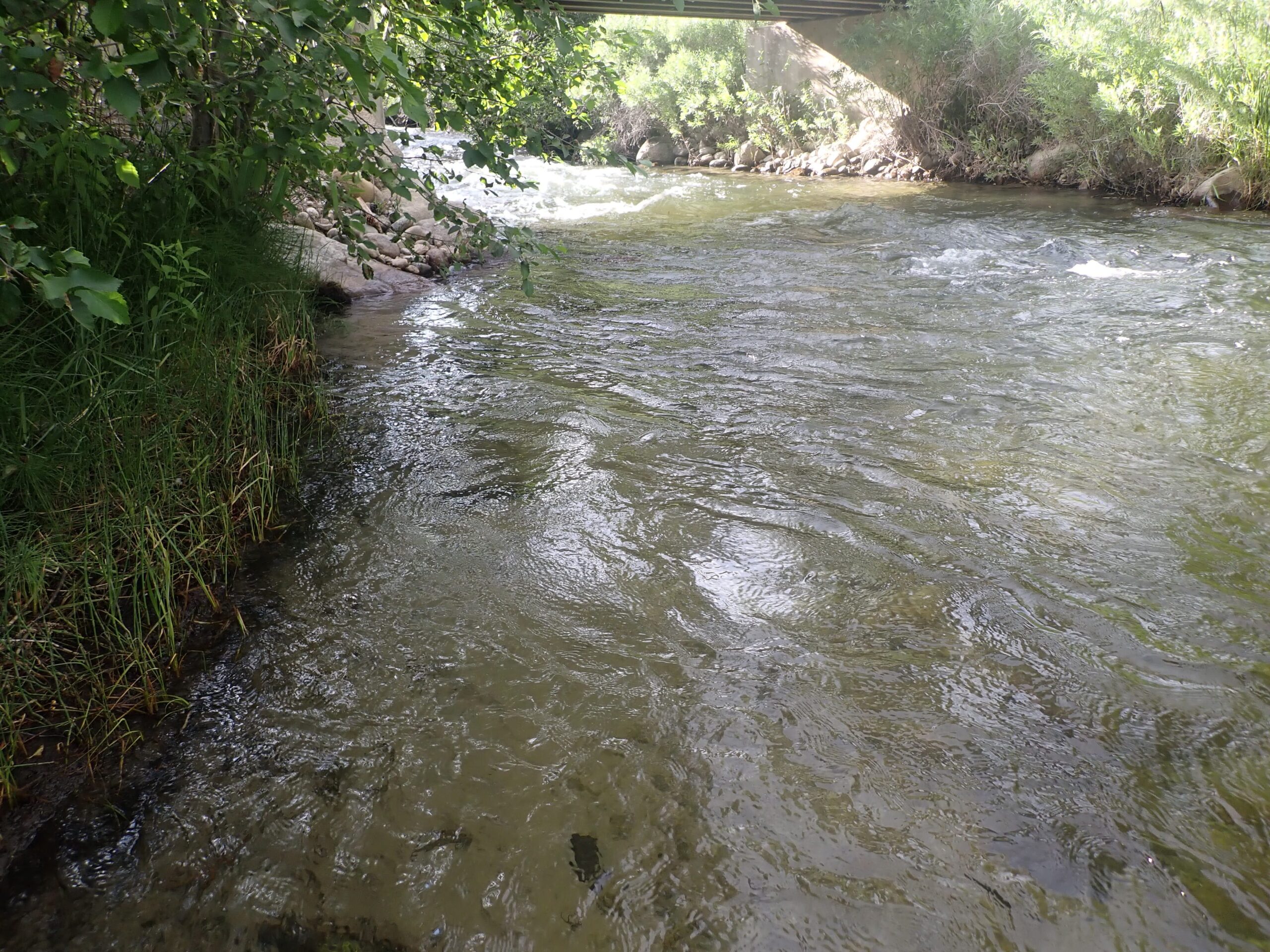 Very Productive Spot
Very Productive Spot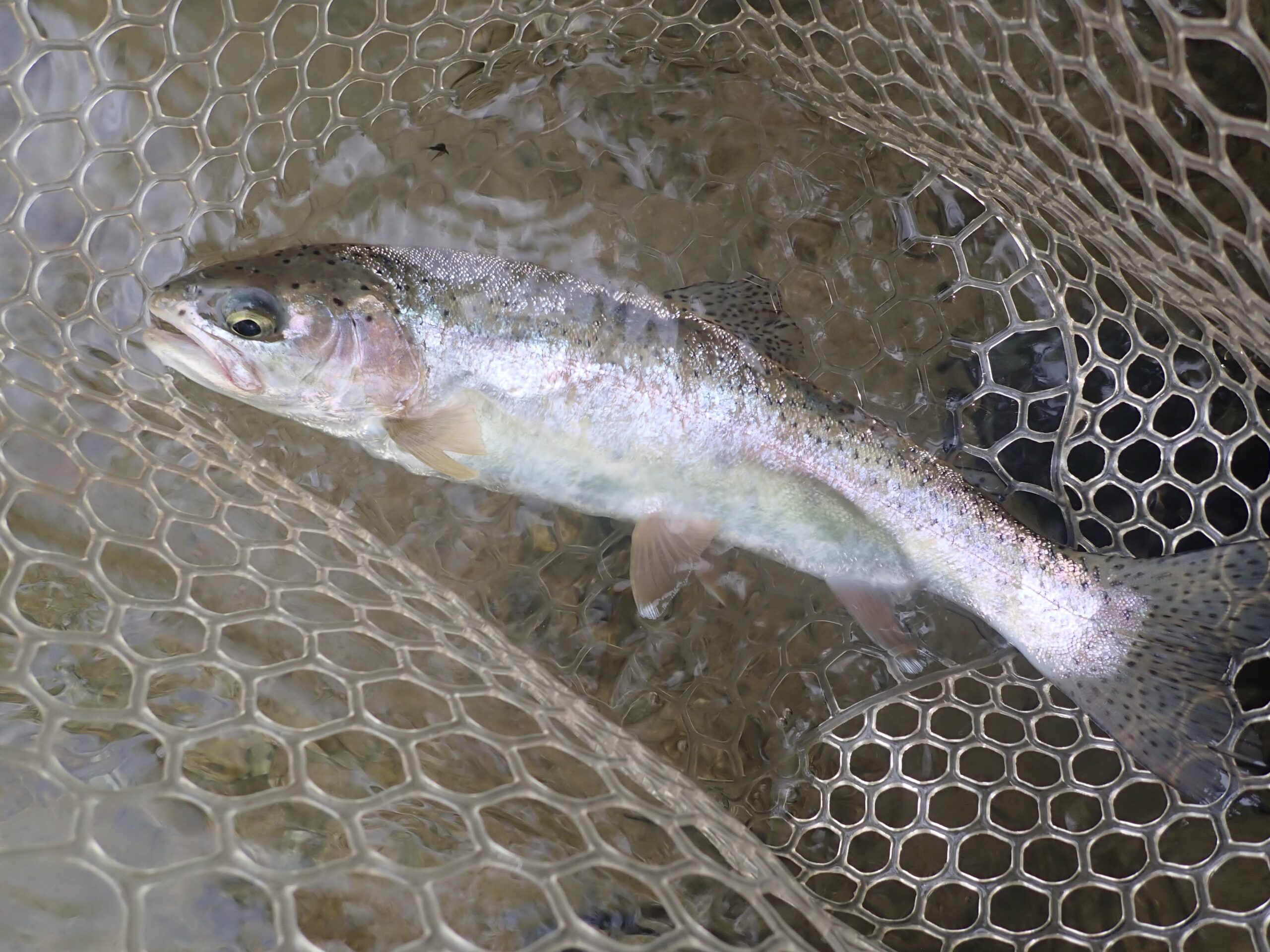 Surprise Rainbow
Surprise Rainbow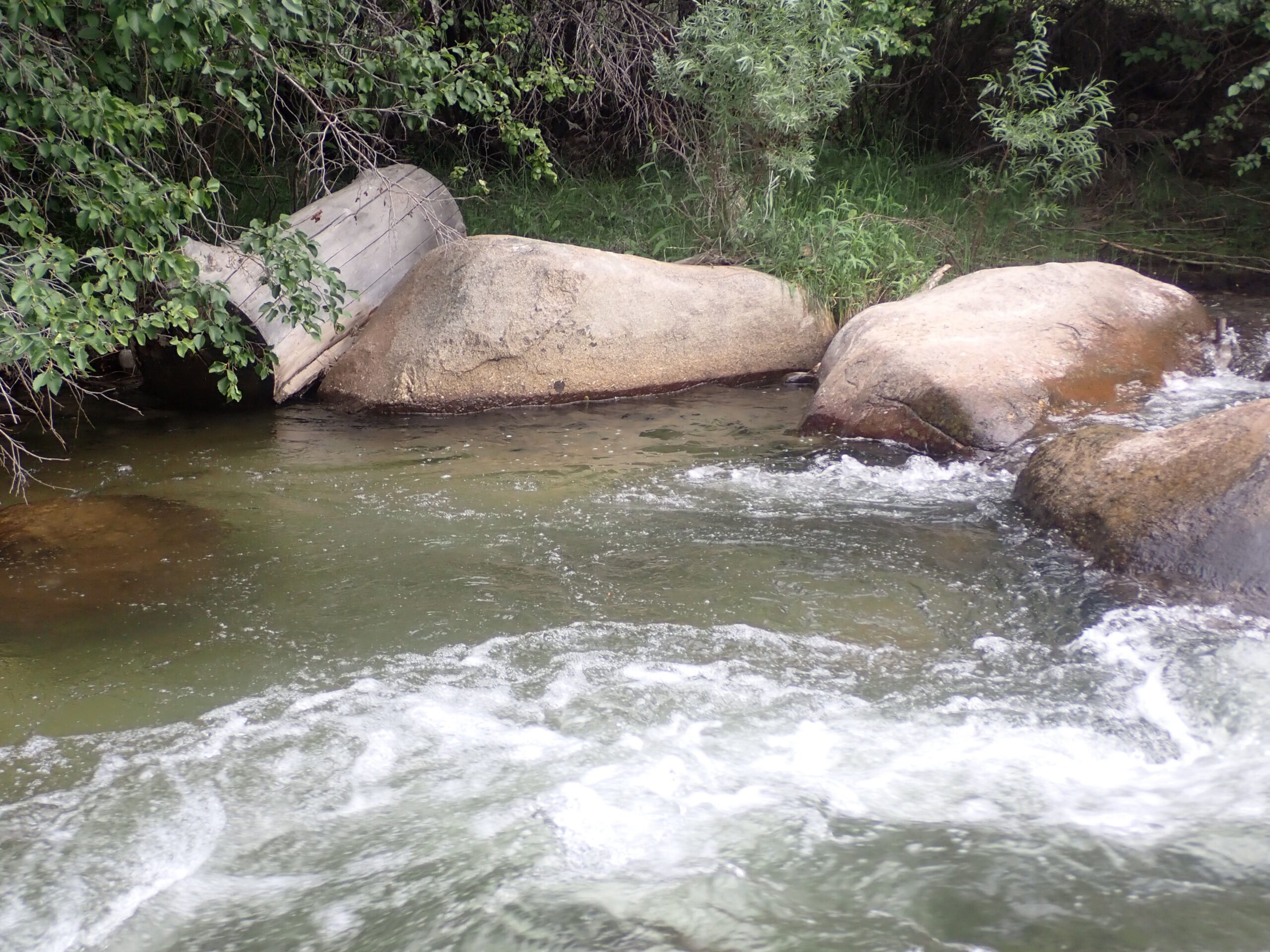 Zoomed in on Site of the Big Guy
Zoomed in on Site of the Big Guy